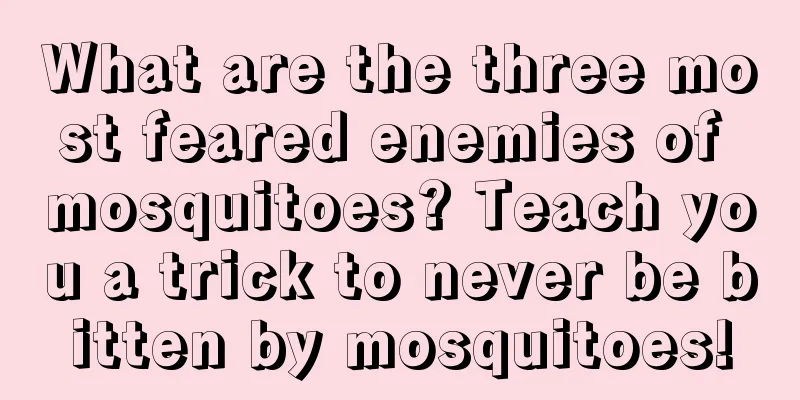Don’t judge an owl by its appearance. Owls are so smart!

|
Leviathan Press: In Japanese culture, the pronunciation of owl is "Fukurou", which sounds the same as "no hard work", which can be extended to mean no hard work and good fortune. In the Western Aegean and Christian cultures, owls are also symbols of "luck and wisdom", but in Chinese culture, owls are known as "birds that announce death" and "birds that chase away souls". Putting aside the cultural meaning, in the Internet era, people tend to think that owls are a symbol of wisdom and cuteness, which is of course inseparable from their facial features and the way they walk. Among the many owl species, the most well-known may be the barn owl, because it likes to move around in places where humans are cultivated or lived. Barn Owl. Size and colour vary widely between subspecies, but most are between 33 and 39 cm long, with a wingspan of 80 to 95 cm. The feathers on the back of the head are mottled grey or brown, and the underparts are white to brown, sometimes with darker spots. The facial disc is a characteristic heart-shaped disc, and most subspecies are white. © Tenor Before we see an owl, we often have a gut-like feeling. I will never forget standing on my balcony in suburban Sydney one evening when suddenly every living thing stilled in the woodland around me. Even the frogs seemed to want to abandon their noisy bodies. Who was there? A few seconds later, a powerful owl (a species native to Australia) landed on the railing, and I almost jumped out of fright. The owl was the size of a beagle, but it floated up to me lazily like a day-old aluminum balloon, and I heard nothing. In pin-drop silence, it hopped back and forth along the railing. I couldn't hear the sound of its claws hitting metal. The stork owl is a bird of the genus Striated Owl in the family Striated Owl in the order Strigiformes. The stork owl is found in Australia and New Zealand, including Australia, New Zealand, Tasmania and its surrounding islands. © Nick Bradsworth The chicks of the eagle owl have white feathers, making them easy to spot. © Nick Bradsworth However, I knew that owls themselves had extremely acute hearing and could pick out the heartbeat of a possum's fur. Out of sight, a second owl—a mate of the first, I presumed—let out a deep, woodwind-like cry that carried far away. The secret of owls' silent flight: On their wings, especially at the front of the flight feathers, there is a layer of protruding comb-like structures, like small comb-like protrusions. These protrusions can generate extremely small vortices during flight, helping to straighten out the airflow flowing through the owl's wings, making it difficult for the airflow to separate, and thus less likely to generate turbulence, and naturally lower the noise level (the picture above is an owl in flight, and the picture below is a pigeon). © National Audubon Society The call of an owl is often ghostly, like the sound of something unfinished. Owls have a dual magic: they can make us doubt our own abilities, while at the same time inviting us to explore their mysteries. There are about 260 species of owls active at night and at dusk, and occasionally during the day, many of which are cryptically camouflaged and covered in feathers that dampen the sound of their voices, their shrill calls floating in the air with no clear source. Some of these owls start practicing at an early age. Great horned owls acquire voices while they are still curled up in the dark chamber of their moon-shaped eggs. The fledglings use their nascent beaks to pierce the tiny air sacs in the egg membrane, inflate their lungs, and begin chirping. Each chick has this private space, and as they grow larger, the cell becomes more and more cramped. If ghostly sounds are heard from beyond the grave, what words are used to describe the babblings of embryonic life, the sounds of creatures too feeble to make their way out of their own eggshells? The otherworldly presence of owls—their calls are more like atmosphere than animal sounds—has inspired superstition: what could be more indicative of sinister events than their haunted cries? Yet owls also evoke a very different perception. Great horned owl. © Tenor In ancient times, they were sometimes considered "birds with human heads." Their domed heads, wide-set eyes (which allow them to have binocular vision), and flat facial profile—unique in their class—are all features that resemble human faces. In mythology, owls are described as thoughtful, even philosophical creatures, but who can say whether this description is simply due to their appearance? Perhaps the inference stems from the observation that owls are active after nightfall, at the end of the regular workday, a time that, for humans, offers an opportunity for rest and contemplation. Or perhaps owls’ sensitivity to stimuli beyond human cognition suggests an unfathomable skill, a shrewd intelligence required to navigate the dark. In any case, in a world where calling a person “bird-headed” is still an insult, the owl’s intelligence has always been a clear anomaly. Short-eared owl. © Daily Mail Whether they are feared or revered, owls have lately attracted the attention of science writers and ornithologists eager to explain the birds' keen perception, their wide range of habitats (Antarctica is the only continent without owls) and the relationship between the two. In her 2016 bestseller, The Hidden Lives of Owls: The Science and Spirit of Nature's Most Elusive Birds, Leigh Calvez focuses on the owls of the Pacific Northwest, sharing her suspenseful nocturnal explorations of the physiology and behavior of owls as small as a teacup-sized saw-whet owl and as large as the majestic great grey owl (or "the northern ghost," as some call it). The Palm Owl, the smallest owl species in North America. © Owl Research Institute Jonathan C. Slaght, a conservationist who has spent decades studying the Blakiston's fish owl, calls it "a fire hydrant with a six-foot wingspan." The Hairy-legged Fish Owl is found in the Russian Far East, Hokkaido, Japan, and Northeast China. It lives in forest streams and feeds on fish. © Ketupa blakistoni In Owls of the Eastern Ice: A Quest to Find and Save the World's Largest Owl (2020), Slater combines science with hard-boiled adventure to track the squishy goblins with electric yellow eyes to the icy Primorye region of eastern Russia—a habitat that is disappearing, as are the owls' hunting grounds in the waters and banks of some of Japan's frigid tributaries. In their exploration of owls, two new books find a closer kinship between birds and humans, but remain wary of over-domesticating these dark folk. In The Wise Hours: a Journey Into The Wild and Secret World of owls, poet and nature writer Miriam Darlington warns against a rush to “cuteify” these birds, noting that an owl’s large, front-facing eyes can easily convey a babyish appeal rather than just depth. She had in mind the owls of meme culture, which feature prominently in viral YouTube, Tumblr and TikTok posts; in fan fiction on Reddit forums; and as avatar options in multiplayer video games. Online, owls play garish, humanoid imitations of themselves, a far cry from the mysterious originals that call in the starlit woods. © Trending Gifs A quick browse through these online platforms shows owls puffed up and wet by the rain, owls playing, powder-puff-like chicks begging for dangling treats, owls frowning and moving their heads up and down, and owls as noisy household pets. To Darlington, these and other similarly comical, childish images of animals are the antithesis of “otherworldliness” and an invitation to deprive nature of its vital wildness. A burrowing owl in a tunnel nest built by a bird lover. © Smithsonian's National Zoo Yet her project to preserve the owl’s surprising temperament did not stop her from using the birds for therapeutic purposes. Darlington’s adult son becomes ill, and in the midst of this family crisis, the narrative of his diagnosis and treatment (he suffers from “the everlasting hum of worry”) becomes closely connected to her journey into the realm of owl insomnia. Between de-liking owls and declaring them to be wonders of nature, Darlington discovers that they can serve as her own personal “gargoyles”: as fearsome creatures, they externalize the author’s anxieties and help her dispel or confront those fears. Jennifer Ackerman is an international favorite among bird lovers and the author of two bestselling books on avian intelligence—The Bird Way: A New Look at Birds Talk, Work, Play, Parent, and Think and The Genius of Birds. In What an Owl Knows: The New Science of The World's Most Enigmatic Birds, she offers a more objective assessment of owls and owl worship. She studied owls in many places: in the wilds of Maringá in southern Brazil; in the hawthorn and chokecherry groves of western Montana; at a road injury rehabilitation center in Minnesota; and in a limestone quarry in the Dutch city of Maastricht. Her investigations led her to ask: How intelligent are owls, and why do they represent a supernatural majesty in a world that is beyond our reach? As Ackerman has previously described, the past 20 years have seen a surprising amount of research into bird cognition.[1] Researchers have found that despite lacking a layered cerebral cortex, several bird species have brains that allow them to perform complex functions such as memory, logic, cognition, and even mathematics. Today, species of corvids (crows, ravens, ravens, etc.) are known for their tool use, problem solving, and seemingly ritualistic responses to the death of their own species. © Tenor American crows will gather around the bodies of their own kind, croaking and then avoiding food found in the area. Pinyon jays can remember every place they have hidden seeds (up to thousands of them). European magpies pass the mirror test: they can recognize themselves as a specific individual. Some parrots have language abilities that go far beyond mimicry. Pigeons, undoubtedly the birds whose intelligence has been most questioned, have been shown, when trained in the laboratory, to have counting abilities comparable to those of primates (able to sort objects from one to a pair to three).[2] Ackerman wondered how the latest scientific research measured up against the smartest birds. Owls have large brains relative to their body size, an anatomical feature thought to have evolved in tandem with the "offspring provisioning" trait. Indeed, owl chicks cannot hunt or forage when they hatch, and they rely on food provided by adults to fuel the growth of their brain tissue. Yet, for the most part, owls’ intelligence relies on their sensory activity, rather than the kind of intelligence that is found in birds that display creativity, self-awareness, exceptional memory, or numeracy.[3] About 75% of an owl’s cortical forebrain is devoted to hearing and vision, functions so astonishing in their breadth and precision that they seem to us like a kind of natural magic. © Flocking Around Owls that are considered "eared" or "horned" do not actually have external pinnae like us, nor do they have bony horns like antelopes. The tuft of feathers on their heads that can be spread out is called a plumicorn, and may be used to signal other owls or to break up the owl's rounded silhouette, making it look like a rough or broken branch stump, thereby hiding its shape. Some owl species, such as the Western Barn Owl, have asymmetrical ear openings (one high and one low). This unique structure allows the owl to determine the height and direction of sounds. © BBC Earth Although owls’ true ears are just two tiny holes hidden beneath their feathers, their sensitivity to sound is unmatched by almost any other animal. Not only can a great grey owl pick up the sound of a vole’s footsteps in a tunnel it has dug into a snowbank, it can also determine the height of the sound and then pierce through the snow to hit that spot.[4] In some owl species, part of the auditory nerve branches off into the optic lobe of the brain, which scientists speculate may mean that the owls develop a visual signal for things they hear but cannot see. Great grey owl. © Birdfact Owls can see very well in the dimmest conditions, and some species have retained light-sensitive rods, which make them sensitive to ultraviolet light—they can see colors that we cannot.[5] Eurasian eagle owls make good use of this part of the visual spectrum: patches of feathers on their necks lighten to reflect ultraviolet light, and these markings are closely associated with competitive behavior. Eagle owl chicks also have ultraviolet-reflecting areas in their throats, which become very visible when the chicks open their mouths to feed. For Ackerman, the owl's sensory acuity could be seen as "its own kind of genius" — a highly adaptive gift, though she acknowledges that scientists rarely interpret such traits as intelligence in animals, instead looking for evidence of intelligence in displays of mental acuity or unusual behaviors that go beyond the norm. Owls do have some activities that were coded as "smart": Ackerman also reported this. Owls are curious about novel things in their environment - this is why they tend to get stuck in pipes, hay blowers and ventilation shafts, as they like to explore these places bravely. Little owls can distinguish between different groups of people, tolerate farmers, but will flee at the sight of ornithologists, who try to catch them and tag them. Although an owl's face appears still, some species flex and reshape the feather disks around their eyes to reflect states of alertness or relaxation. Owls, especially young ones, play. They also learn: Great horned owls spend about six months with their parents, developing agility that helps them survive, including how to fly through tight tree canopies and how to swoop and kill prey. © Tenor Compared to adults, young barn owls experience longer periods of rapid eye movement (REM) sleep, a sleep period associated with vivid and emotional dreams in humans.[6] If young barn owls do dream, the researchers suspect that these dreams help them consolidate skills acquired at dusk, just as when rodents enter REM sleep, they engage in a period of mental processing associated with learning to avoid birds of prey, including owls. Indeed, if we look beyond the owl’s symbolic wisdom, we might recognize their most anthropomorphic quality: versatility. Owls have migrated as unwitting stowaways on ships and have thrived in new lands. Strips of agricultural land have also facilitated their spread. Several species are well adapted to our buildings and infrastructure, thriving in stables and belfries, occupying resting places along causeways, and roosting by the hundreds in city squares or cemeteries (where offerings on graves attract rodents). Five young burrowing owls in Cape Coral, Florida. © Cape Coral Friends of Wildlife Male burrowing owls have been documented decorating their dirt tunnels with potato cubes, concrete blocks, corn cobs, old gloves and stolen fabric (in order of preference: red, white, blue and green) – a little underground treasure trove. Camera traps have also revealed that owls’ food sources are more diverse than we once thought. They not only eat mice, fish, amphibians, and insects, but they also forage for carrion: picking the flesh from dead dolphins and rotting crocodiles on the seashore, and stripping the quills from the carcasses of African crested porcupines. The largest owls will prey on other birds (including owls), as well as skunks, deer, and even cats. Ultimately, Ackerman concluded, owls don’t deserve their legendary reputation as keepers of esoteric knowledge. Nor are they as intelligent as crows by modern scientific standards. Owls are opportunists. When Flaco, an eagle owl, first escaped from New York’s Central Park Zoo, his flight muscles weren’t strong enough to fly more than four blocks, and his landings were clumsy. For a decade, he’d lived on hand-cut meat and pre-killed mice. In February, someone damaged the stainless steel mesh of the Central Park Zoo's bird enclosure and let the eagle owl "Flaco" escape. Flaco had lived in the Central Park Zoo since he was one year old, and people were worried that he would not hunt in the wild after escaping. The picture shows the zookeeper trying to recapture Flaco with a wire trap. © wikipedia Today, Flacco hunts his own prey and prowls artfully around the North End of Central Park. Bird watchers praise the wildness he has retained despite his long years in captivity. Described as “chubby” and “puffy” when he was in the zoo, Flacco quickly broke free of not only his enclosure but also his performative charm, which is what makes him so fascinating. Owls may be our alter egos—and not just in their ability to thrive in diverse habitats. What animal better fulfills our deep need to oscillate between symbolic meanings than an owl, calling out to our dark, powerful instincts and puffing out its feathers to please our whims? That’s the duality of the owl: just like us. References: [1]www.scientificamerican.com/article/bird-brains-are-far-more-humanlike-than-once-thought/[2]www.nytimes.com/2011/12/23/scienc e/pigeons-can-learn-higher-math-as-well-as-monkeys-study-suggests.html[3]www.theatlantic.com/magazine/archive/2022/07/light-noi se-pollution-animal-sensory-impact/638446/[4]www.cell.com/trends/neurosciences/fulltext/S0166-2236%2818%2930017-1[5]www.science direct.com/science/article/pii/S0042698919300471[6]www.nbcnews.com/sciencemain/stuff-dreams-owlets-sleep-human-babies-6c10945743 By Rebecca Giggs Translated by Kushan Proofreading/Yuba and Lean Bamboo original/ www.theatlantic.com/magazine/archive/2023/09/owl-senses-smart-animal-intelligence/674769/ This article is based on the Creative Commons License (BY-NC) and is published by Kushan on Leviathan The article only reflects the author's views and does not necessarily represent the position of Leviathan |
<<: Small wounds can cause big trouble! In what situations do you need a tetanus shot?
Recommend
Tips for scientific placement of information flow ads!
With the vigorous development of mobile communica...
Why are cinema seats red? It's not about creating an atmosphere, it's about our cells
Those who often go to the cinema to watch movies ...
Eating liver nourishes the liver? Thin people don’t have fatty liver? Recognize the 6 major liver disease misunderstandings and protect the liver scientifically
The liver is an important organ in the human body...
Kuaishou live broadcast analysis!
“In the past, if you told gossip, your popularity...
Branding: How to write a proposal?
As a third-party company, when we want to BD a ne...
Operation and promotion: How should a novice write an operation plan?
When they first enter the workplace, many newcome...
Summary of circular progress bar in Android custom View
Recently, I have developed an open source project...
Transaction Gold Link Apollo Mobile Terminal Abnormal Monitoring System
Overview 01Business Background and Purpose Genera...
Top 10 keywords for breaking through brand traffic in 2021!
As the consumption environment evolves, how can n...
How much does it cost to develop a photo app in Shangrao?
Shangrao photo applet development price 1. Displa...
"Sky City" on the Qinghai-Tibet Plateau
Loading long image... Source: China Tibet Net, So...
Heavy games are becoming a general trend. TBG offline salon offers suggestions for the development of TV games
In 2015, the popularity of "smart" and ...
New brain-like network is here! Chinese scientists build bridges between artificial intelligence and neuroscience
Author: Huang Yanhong, Huang Xianghong, Duan Yuec...
Hongmeng OS 2.0 is about to be launched, and the mobile developer Beta version will be released on December 16
On December 14, Wang Chenglu, President of Huawei...
It is enough for Toutiao information flow delivery and strategy optimization
Placement From June to November 2016, the consump...









